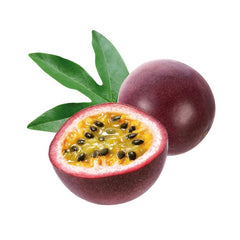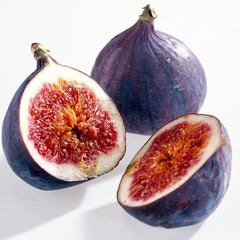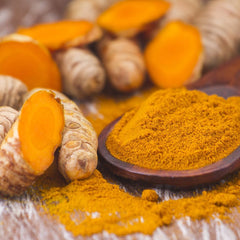Are Floral Perfumes Feminine?
Click For Affordable Inspired Perfume Alternatives
For decades, floral perfumes have been celebrated as some of the most classic and beloved fragrances in the world of aromatics. Often associated with femininity, these scents evoke images of blooming gardens, delicate blossoms, and romantic elegance. However, in recent years, perceptions around floral perfumes have evolved, prompting questions about their gender associations. Are floral perfumes inherently feminine, or has the perception shifted in modern fragrance culture? In this article, we delve into the history, cultural influences, and contemporary perspectives surrounding floral perfumes and their gender identity.
Are Floral Perfumes Feminine?
The question of whether floral perfumes are inherently feminine is both complex and subjective. Traditionally, floral scents have been marketed predominantly toward women, featuring soft, sweet, and romantic notes that align with societal notions of femininity. However, the idea that certain fragrances are strictly gendered is increasingly outdated, as modern perfumery blurs these lines and embraces diversity in scent expression. To understand whether floral perfumes are truly feminine, it’s essential to explore their history, cultural significance, and evolving perceptions.
The Historical Context of Floral Perfumes
Historically, floral scents have been used across many cultures for centuries, often with specific gender associations that reflect societal norms of their time. For example:
- Ancient Egypt: Both men and women used floral perfumes made from fragrant oils and resins, though certain floral ingredients like lotus and jasmine were often associated with femininity and beauty.
- Medieval Europe: Floral fragrances gained popularity among women in aristocratic circles, emphasizing delicacy and refinement.
- Victorian Era: Perfumes with floral notes became symbols of femininity, modesty, and elegance, often seen in women’s fashion and personal grooming.
During these periods, floral scents were primarily connected with femininity due to societal expectations and marketing strategies. Nonetheless, men also used floral elements—such as rose or lavender—in personal scents, though often in subtler ways.
Floral Perfumes in Modern Culture
Today, the perception of floral perfumes has significantly expanded. They are no longer confined to traditional gender roles, thanks to innovative perfumers and changing societal attitudes. Some key points include:
- Unisex and Gender-Neutral Fragrances: Many brands now offer floral scents designed to appeal to all genders, featuring a balanced mix of floral and other notes.
- Celebrity and Niche Perfumes: Prominent figures and niche brands have challenged gender norms by creating floral fragrances that are marketed as unisex or even masculine.
- Popular Culture: Media and fashion increasingly depict floral perfumes as versatile, sophisticated, and expressive of individual personality rather than gender.
This shift reflects a broader movement toward personal expression and away from rigid gender stereotypes in beauty and fragrance industries.
The Perception of Floral Perfumes as Feminine
So, why do many still associate floral perfumes with femininity? Some reasons include:
- Historical Marketing: Traditional advertising campaigns have historically targeted women with floral scents, reinforcing societal stereotypes.
- Fragrance Composition: Floral perfumes often feature sweet, soft, and romantic notes like rose, jasmine, and peony, which are culturally linked to femininity.
- Cultural Associations: Media, literature, and popular culture have perpetuated the idea that flowers symbolize femininity, delicacy, and beauty.
However, these associations are increasingly challenged by modern fragrance design and cultural shifts.
Floral Perfumes and Gender Diversity
Contemporary perfumers are increasingly creating fragrances that defy traditional gender binaries. Here’s how floral perfumes are being redefined:
- Unisex Floral Fragrances: Scents that combine floral notes with woody, spicy, or citrus elements to appeal to all genders.
- Masculine Floral Scents: Fragrances that incorporate floral elements but are designed with stronger, more robust base notes like vetiver, cedar, or musk.
- Feminine Floral Scents: Fragrances emphasizing delicate and sweet floral notes, often with a hint of femininity, but accessible to anyone.
For example, fragrances like Byredo's Rose Noir or Le Labo's Santal 33 showcase how floral notes can be incorporated into gender-neutral or even traditionally masculine scents, expanding the perception of what floral perfumes can be.
Are Floral Perfumes Truly Feminine? The Verdict
Ultimately, the idea that floral perfumes are exclusively feminine is a matter of societal perception rather than inherent truth. Fragrance, by nature, is subjective and deeply personal. What might be considered feminine in one culture or era could be viewed differently elsewhere or in the future. The versatility of floral notes allows them to be used in a wide array of scents that transcend gender boundaries.
Many modern consumers and perfumers recognize that fragrance is an art form that expresses personality, mood, and identity beyond gender labels. Floral perfumes can be soft and romantic, bold and provocative, fresh and invigorating—making them suitable for everyone. The key is individual preference and how a person chooses to wear and interpret the scent.
Concluding Thoughts: Embracing the Diversity of Floral Perfumes
While historically associated with femininity, floral perfumes are now more diverse and inclusive than ever before. They are no longer confined to a single gender narrative but are celebrated as versatile, expressive, and universal. Whether you prefer a delicate rose scent, a vibrant jasmine blend, or a unisex floral concoction, the beauty of floral perfumes lies in their ability to adapt and reflect individual style.
As society continues to challenge gender stereotypes and embrace personal expression, the perception of floral perfumes as feminine will continue to evolve. Ultimately, the best fragrance is one that resonates with your personality and makes you feel confident—regardless of societal labels. So, the next time you encounter a floral perfume, remember: it's not about gender but about what makes you feel beautiful and authentic.
Buy Perfumes - Best Online Retailers
Click For Affordable Inspired Perfume Alternatives
Click For The Best Niche Perfumes & Decants
Pheromone Perfumes - Confidence, Attraction & Appeal - Click For More
Home Fragrances & Candle Warmers - Click To Scent Up Your Spaces Today!



